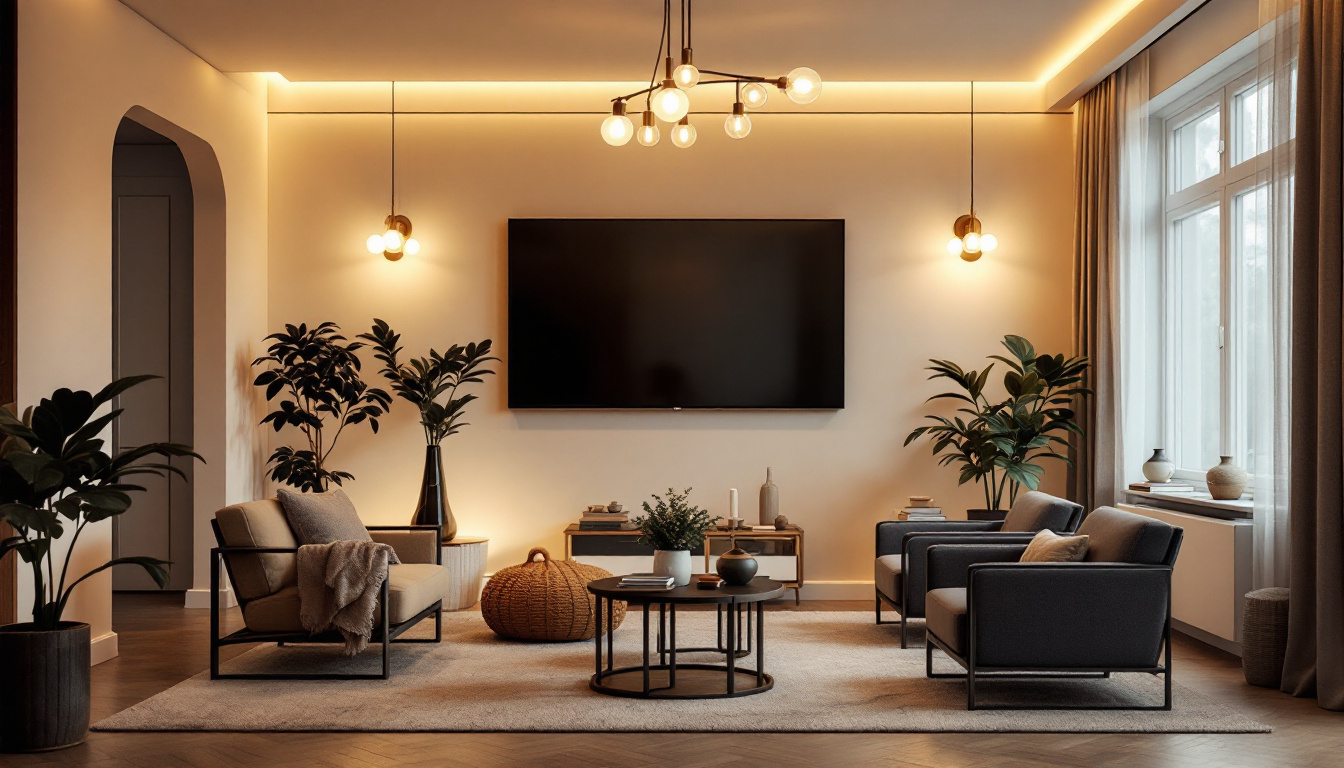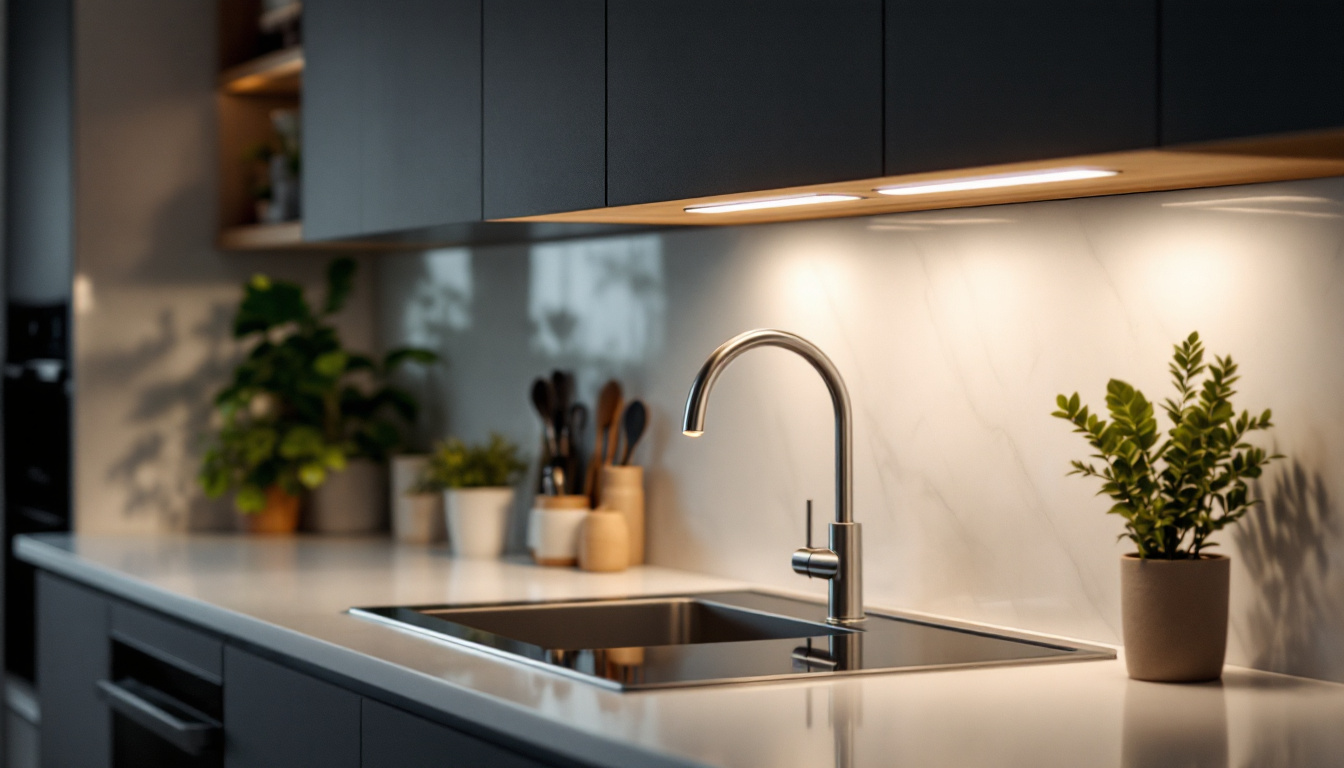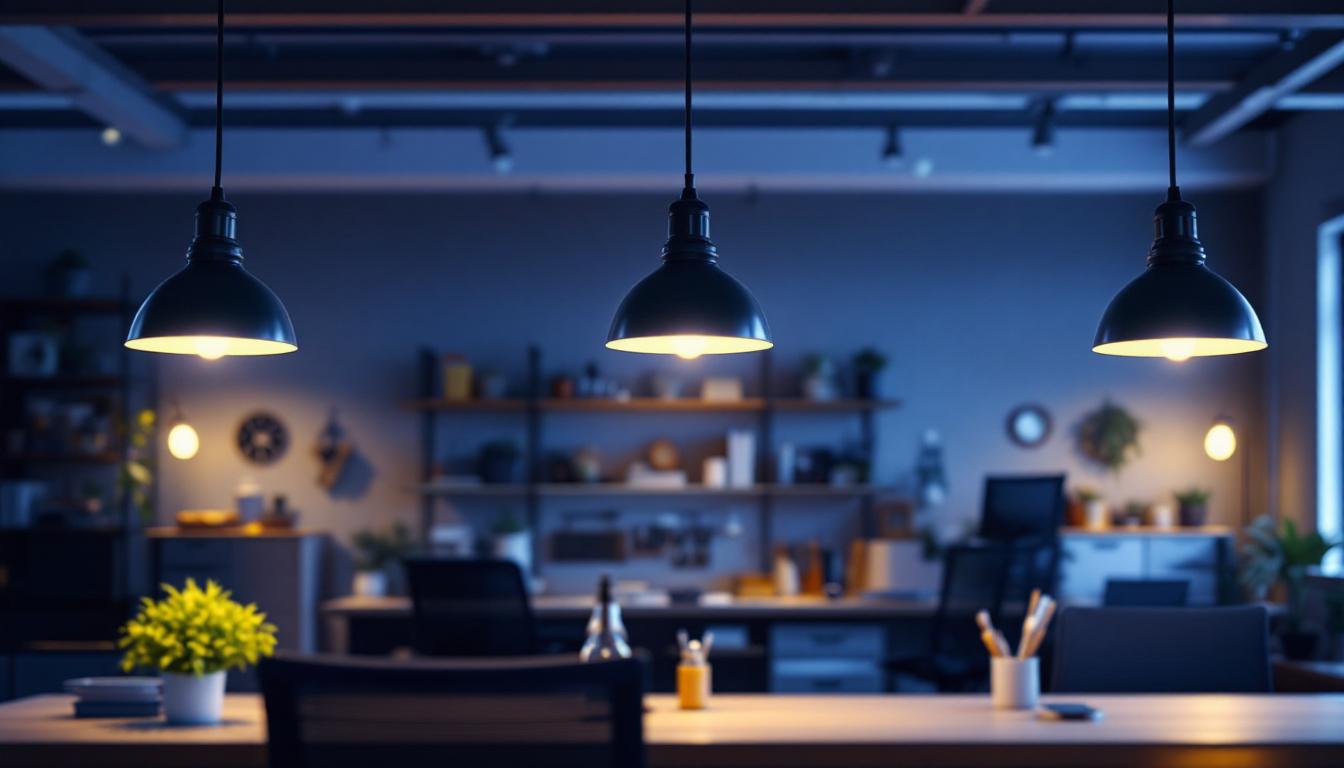
The living room serves as the heart of a home, a space where families gather, entertain guests, and unwind after a long day. As such, the lighting in this area is crucial for creating the right atmosphere. Proper lighting can enhance the aesthetic appeal of the room, influence mood, and even affect functionality. For lighting contractors, understanding the nuances of living room lighting is essential to delivering quality service and ensuring client satisfaction.
When considering light fixtures for living rooms, it is important to balance both form and function. The right fixtures not only illuminate the space effectively but also complement the overall design. This article will delve into best practices for lighting contractors, offering insights into fixture selection, placement, and the integration of various lighting types.
One of the key elements to consider is the layering of light, which involves combining ambient, task, and accent lighting to create a well-rounded illumination scheme. Ambient lighting provides the overall glow of the room, often achieved through ceiling fixtures or wall sconces, while task lighting focuses on specific areas, such as reading nooks or workspaces, using table lamps or floor lamps. Accent lighting, on the other hand, highlights artwork or architectural features, adding depth and interest to the space. By thoughtfully layering these types of lighting, contractors can help homeowners achieve a dynamic and versatile living room that caters to different activities and moods.
Additionally, the color temperature of the light bulbs used can significantly impact the ambiance of the living room. Warmer tones, typically around 2700K to 3000K, create a cozy and inviting atmosphere, perfect for relaxation and social gatherings. In contrast, cooler tones, ranging from 3500K to 4100K, can lend a more energetic and focused environment, ideal for tasks or entertaining. By educating clients on the effects of color temperature and providing options that align with their lifestyle and preferences, lighting contractors can enhance the overall experience of the living room, ensuring it remains a welcoming and functional space for all who enter.
Choosing the appropriate type of light fixture is fundamental to achieving a well-lit living room. Different types of fixtures serve distinct purposes and can dramatically change the ambiance of a space. Here are some common types of light fixtures that contractors should consider:
Ambient lighting provides overall illumination and sets the foundation for the room’s lighting scheme. This type of lighting is typically soft and diffused, creating a warm and inviting atmosphere. Common fixtures for ambient lighting include ceiling-mounted fixtures, chandeliers, and recessed lighting.
When selecting ambient lighting, it is crucial to consider the height of the ceiling and the size of the room. A large chandelier may overwhelm a small space, while recessed lighting can create a sleek, modern look in larger living rooms.
Task lighting is designed to illuminate specific areas of the living room where activities such as reading, working, or playing games occur. Floor lamps, table lamps, and wall sconces are excellent choices for task lighting. These fixtures should be strategically placed to provide adequate light without causing glare or shadows.
For optimal effectiveness, lighting contractors should ensure that the brightness of task lighting complements ambient lighting. This balance helps create a cohesive lighting design that enhances the functionality of the living room.
Accent lighting adds drama and interest to a living room by highlighting architectural features, artwork, or decorative elements. Track lighting, spotlights, and wall-mounted fixtures are popular choices for accent lighting. These fixtures should be used sparingly to avoid overwhelming the space.
When implementing accent lighting, consider the placement and intensity of the light. The goal is to draw attention to specific features without disrupting the overall balance of the room’s lighting scheme.
With a variety of light fixtures available, selecting the right ones for a living room can be a daunting task. Here are some best practices to guide lighting contractors in their selection process:
Every client has unique preferences and requirements when it comes to lighting. Conducting a thorough consultation to understand their lifestyle, design preferences, and specific needs is essential. This dialogue will help in recommending fixtures that align with their vision while also meeting functional requirements.
Additionally, consider the existing decor and color palette of the living room. Fixtures should complement the overall aesthetic rather than clash with it. Offering a range of options can empower clients to make informed decisions that they will be satisfied with long-term.
In today’s environmentally conscious world, energy efficiency is a significant consideration for many homeowners. When selecting light fixtures, lighting contractors should prioritize energy-efficient options such as LED fixtures, which consume less power and have a longer lifespan compared to traditional incandescent bulbs.
Educating clients about the benefits of energy-efficient lighting can also enhance their satisfaction. Highlighting potential savings on energy bills and the reduced environmental impact can make a compelling case for choosing these fixtures.
The style of light fixtures should harmonize with the overall design theme of the living room. Whether the space is modern, traditional, or eclectic, there are fixtures available to suit every aesthetic. Lighting contractors should stay updated on current design trends and offer clients a curated selection of fixtures that reflect their style.
Incorporating a mix of styles can also create visual interest. For instance, pairing a contemporary chandelier with vintage-inspired table lamps can add depth and character to the living room.
The placement of light fixtures is as crucial as their selection. Proper installation can dramatically affect the effectiveness of the lighting scheme. Here are some key considerations for lighting contractors:
Layering different types of lighting—ambient, task, and accent—creates a dynamic and versatile lighting environment. Contractors should aim to incorporate multiple light sources at varying heights to achieve depth and dimension in the living room.
For example, combining recessed lighting in the ceiling with floor lamps and wall sconces can provide a well-rounded lighting experience. This approach allows for flexibility, enabling clients to adjust the lighting based on the time of day or the activity taking place.
The height at which fixtures are installed can significantly impact their effectiveness. For ambient lighting, fixtures should be mounted high enough to provide even illumination without obstructing views or creating shadows. In contrast, task lighting should be positioned at a height that allows for comfortable use without glare.
Scale is also essential. Large fixtures can dominate a small room, while tiny fixtures may get lost in a spacious living area. Lighting contractors should carefully assess the scale of both the room and the fixtures to ensure a harmonious balance.
Proper wiring and electrical considerations are fundamental to the safe and effective installation of light fixtures. Lighting contractors should be familiar with local electrical codes and regulations to ensure compliance. Additionally, they should assess the existing electrical infrastructure to determine if upgrades are necessary to support new fixtures.
In some cases, it may be beneficial to install dimmer switches, allowing clients to adjust the brightness of their lighting according to their needs. This added flexibility can enhance the overall experience of the living room.
Once the lighting fixtures are installed, ongoing maintenance and updates are essential to keep the living room looking its best. Here are some best practices for lighting contractors to share with clients:
Dust and debris can accumulate on light fixtures over time, diminishing their effectiveness and appearance. Lighting contractors should advise clients on the importance of regular cleaning. Simple maintenance tasks, such as wiping down fixtures and replacing burnt-out bulbs, can significantly extend the lifespan of the lighting system.
Additionally, contractors should recommend specific cleaning methods based on the materials of the fixtures. For instance, glass fixtures may require more delicate cleaning techniques than metal ones to avoid scratches or damage.
As design trends evolve, clients may wish to update their living room lighting to reflect current styles or improve functionality. Lighting contractors can assist by offering suggestions for new fixtures that align with the latest trends while also meeting the client’s needs.
Encouraging clients to consider seasonal updates or changes based on their lifestyle can also be beneficial. For example, adding brighter fixtures for the summer months or softer lighting for winter can create a more inviting atmosphere throughout the year.
Technology is continually advancing, and smart lighting solutions are becoming increasingly popular. Lighting contractors should stay informed about the latest innovations in lighting technology, such as smart bulbs and automated lighting systems.
Educating clients on these advancements can enhance their overall experience and satisfaction with their lighting. By offering solutions that integrate technology, contractors can help clients achieve greater control over their living room lighting, ultimately leading to a more customized and enjoyable environment.
Lighting plays a pivotal role in shaping the atmosphere and functionality of living rooms. For lighting contractors, understanding the best practices for selecting, placing, and maintaining light fixtures is essential to delivering exceptional service. By considering the various types of fixtures, assessing client needs, and staying informed about design trends and technological advancements, contractors can create beautifully lit living spaces that meet the diverse needs of their clients.
Ultimately, the goal is to create a harmonious balance between aesthetics and functionality, ensuring that each living room is a welcoming and enjoyable space for all who enter. By adhering to these best practices, lighting contractors can elevate their craft and enhance the overall experience for their clients.
Ready to transform living spaces with exceptional lighting solutions? At LumenWholesale, we provide lighting contractors with the finest, spec-grade light fixtures at unparalleled wholesale prices. Our commitment to quality and affordability ensures that you can bring your clients’ visions to life while staying within budget. With our extensive selection of premium lighting products, free shipping on bulk orders, and no middleman markups, you can trust LumenWholesale to be your partner in creating inviting and functional living rooms. Elevate your lighting projects today by visiting Wholesale Lighting at the Best Value and discover how we blend quality, affordability, and convenience for an unmatched experience.

Discover expert insights and practical tips for lighting contractors on selecting and installing light switches and outlets.

Discover the essential insights lighting contractors need to meet client expectations when installing kitchen can lights.

Discover how overhead shop lights can transform your workspace with improved illumination and design aesthetics.

Discover the essential reasons why staying updated on electrical timer switches is crucial for lighting contractors.